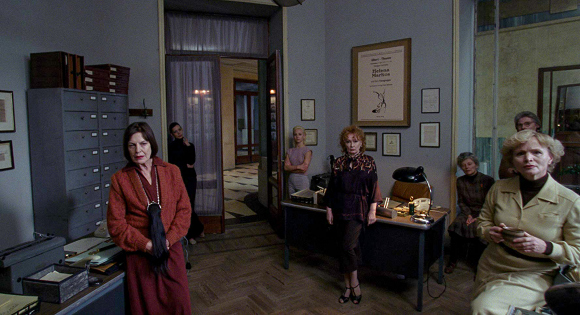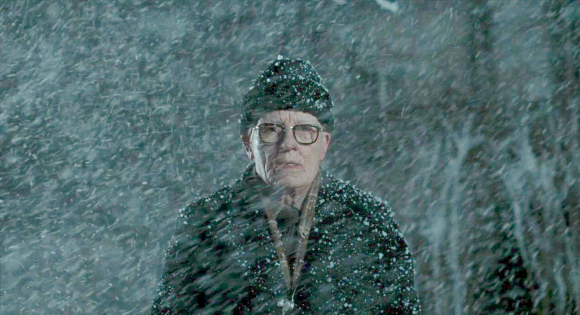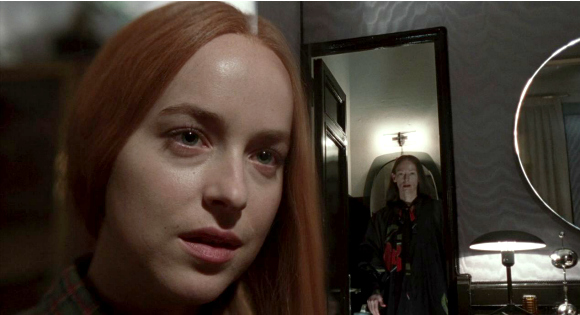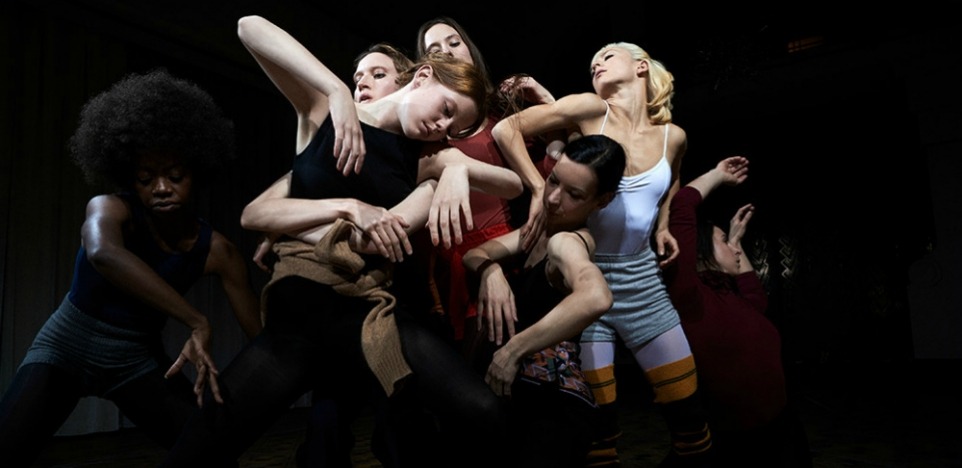Following up on the success of his celebrated and beautifully shot feature Call Me By Your Name, Luca Guadagnino has moved into completely different territory with Suspiria, his gorgeously terrifying adaptation of horror master Dario Argento’s 1977 cult classic. The results of this new direction will definitely not be to all tastes, as its excesses are many, including blood, gore, and convoluted mythology. But for those who pursue spiritual sustenance through walks on the wild side, this overstuffed film also supplies visually stunning symbolism and deep social commentary in abundance.

The setting is a divided 1970s Berlin, in the grip of the Baader-Meinhoff Group’s “German Autumn” terrorist attacks. The Markos Dance Company, housed in an imposing West Berlin structure marked “TANZ,” and led by earth mother Madame Blanc (Tilda Swinton) and a team of variously mysterious women, has just accepted a new student, Susie Bannion (Dakota Johnson). Freshly arrived after escaping her rigid Amish upbringing in Ohio, Susie appears to be the replacement for Patricia (Chloe Grace Moretz), who has disappeared just after filling the film’s prologue with rants about the company actually being a cover for a witch coven.
Patricia has revealed this secret to the unbelieving Dr. Josef Klemperer (also Swinton, under pounds of prosthetics), whose journey to confront his own demons forms the film’s other parallel narrative. Eventually, both threads will intersect in harrowingly violent and disturbing ways, revealing the truth about the coven and the truth about Dr. Klemperer’s tortured past.

As Susie ascends to stardom in the company, Dr. Klemperer descends into a frenzied understanding of just what Patricia meant when she implored him to help her escape. But as more is revealed about Madame Blanc and the coven, the lines between good and evil blur, creating a cloudy chasm into which many characters will fall. Every one of them has guilt and shame to spare, and only some will escape their shadow sides alive.
If all of these details sound like the makings of a macabre mess, they truly are, and impatient, weak-stomached audiences might lose patience with the slow build and grisly set pieces. But Suspiria is not simply scary. Along with the grotesquerie comes insight into the physical and psychological demands of art-making, as well as insight into the trauma that infects the minds, hearts, and bodies of those affected by historical cycles of violence. Suspiria does want to thrill, but those thrills serve more profound critiques of how we do and do not deal with our pasts, how we do and do not create and sustain community, and how we do and do not listen to the most vulnerable among us.

When Susie, Madame Blanc, and Dr. Kemperer finally meet their respective fates, there is blood and gore galore. But there is also hope, both that guilt and shame can give way to rebirth, and that there is another way beyond continued participation in selfish, violent loops. Suspiria’s complex and rigorous moves may confound at first, but the film’s tricky dance ultimately haunts in disarmingly healing ways.
